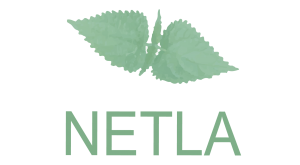Complexity of drama teaching and drama teachers’ role in relation to its implementation?
DOI:
https://doi.org/10.24270/serritnetla.2019.20Keywords:
drama, arts education, curriculum, practice architectureAbstract
The objective of this article is to shed light on the complexity of drama teaching and drama teachers’ role in relation to the implementation of drama in compulsory education in Iceland. The article is based on my PhD study, entitled Understanding Drama Teaching in Compulsory Education in Iceland: A Micro-ethnographic Study of the Practice of Two Drama Teachers. The research project was motivated by the fact that in 2013 drama was added as a compulsory subject for all students in primary and lower secondary curricula in Iceland. To include a new subject raises many fresh questions regarding how drama can contribute to students’ learning within the arts. Why is this art subject obligatory? What can be learned by taking drama? Who has the competence to teach this subject, and – if it is used as a framework to support learning in other subjects – who can elaborate on such a framework in a way that best brings out its potential as an art subject? When a new national curriculum guide for drama is created, is there a need for continuous education to meet the changes introduced? How can teachers, who may not be used to including drama as a working mode, become qualified to teach drama? What kind of support is needed from the education system in order to make this work? What could be the contribution of this arts subject that may not be easily accomplished in other subjects? Those questions are examples of myriads of questions that must be asked when a new subject is made obligatory at the same time as fundamental changes are presented in the national curriculum. The study aims to answer the questions, which relate to the question of drama as an arts subject. This research sets out to discover how drama is implemented in compulsory education, and how teaching is practiced in two Icelandic schools. The overarching research question is: How is drama, as a subject, implemented in Icelandic compulsory education? An ethnographic study of the culture and the context for the implementation of drama was carried out within a socio-cultural framework of understanding. The ethnographic account is based on thick descriptions and thematic narrative analyses summed up as a cultural portrait of the drama teaching practices in Hillcrest (grade 5) and Mountain-line (grade 6) schools, respectively. The theory of practice architectures by Stephen Kemmis and Peter Grootenboer is used to interpret the findings. In this practice theory, practice is defined as a nexus of sayings, doings and relatings, dependent on arrangements in the practice architectures. Enabling and constraining arrangements in the practice architectures connected to the implementation of drama as a subject in compulsory education are identified and discussed. The study calls for changes in opportunities for the professional development of drama teachers. Further, it calls for a reconceptualization of how a drama teacher’s learning trajectory could be designed in order to support the drama teacher and his or her resilience and motivation to transform the teaching for the benefit of the students and their learning process.Downloads
Published
2018-02-04
Issue
Section
Ritrýndar greinar
